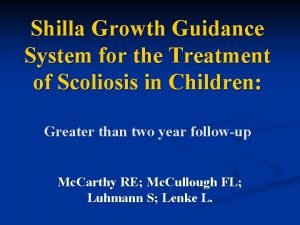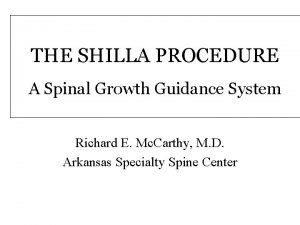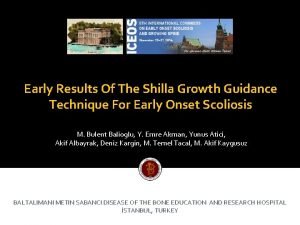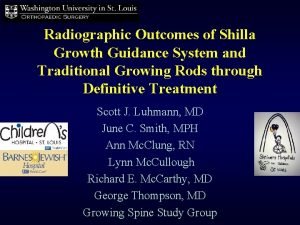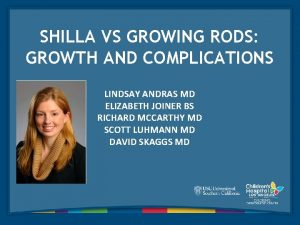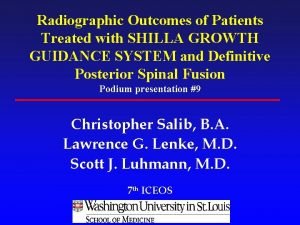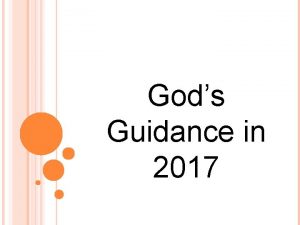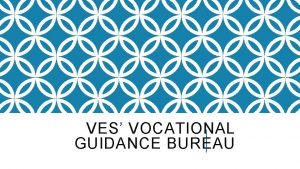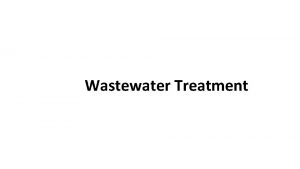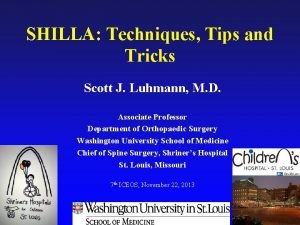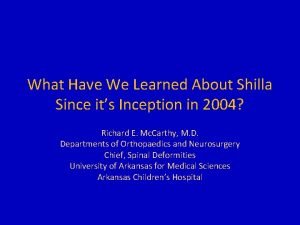Shilla Growth Guidance System for the Treatment of















- Slides: 15

Shilla Growth Guidance System for the Treatment of Scoliosis in Children: Greater than two year follow-up Mc. Carthy RE; Mc. Cullough FL; Luhmann S; Lenke L.

Shilla Growing Rod System 860 Preop Immediate Postop 3 1/2 yrs postop Involves an index surgical procedure that allows continued spinal growth without repeated lengthenings

Shilla Concept VS Traditional “Growing Rods” Based on distraction Shilla corrects apex Guides ends of curve

Shilla cap 3. 5 rod Fixed at apex Polyaxial screw 4. 5 rod Shilla Growing Screws Avoid repeated lengthenings

Surgical Techniques n Subperiosteal exposure of apex only

Subfascial exposure for Placement of Shilla Growing Screws

Surgical Technique Apical fusion with complete correction In all planes

TLSO for 3 mo post op

Method n n n Ten patients (from cohort of 36) with greater than 2 yr. follow-up (2 -3 yr) Mean age 7+6 yrs (2 -10 yrs) Scoliosis n n Average preop curve 70. 5 degrees (40 -86 degrees) Multiple Diagnoses n n n n Infantile idiopathic scoliosis (2) Congenital scoliosis (1) Prader-Willi syndrome (1) Neuromuscular scoliosis (2) Myelomeningocele (1) Intraspinal lesion (1) Beale’s syndrome (1)

Results n Postoperative curve average: n n 27 degrees at 6 wks maintained at 34 degrees at 2 yrs Preop SAL improved an average 13% n Truncal height (T 1 to S 1) an average 12% n 3 yrs old Preop 3 mo postop 5 yrs old 2 yrs postop

Results (cont. ) n Surgeries beyond index procedures (5) n Rod revisions (3) n 1 grew off the end of the rod n 1 rod change to a smaller size due to prominence n 1 rod replacement due to a broken rod n Wound debridement (2) n 2 pts had low-grade infections in the early postoperative period (washed out, left implants)

Comparison of cohort with traditional growing rod technique (if treated thu Shilla 5 Procedures beyond index VS Traditional Growing Rod 49 Procedures beyond index

2 ½ yrs old Infantile idiopathic Preop 6 yrs old 3 ½ yrs postop

Congenital Spina bifida E X A M P L E S 3 yrs postop

Conclusion n n The Shilla procedure allows children correction of their spinal deformity and brace-free growth without repeated trips to the operating room for lengthening. Curve correction has been maintained as growth has continued at 2 yr F/U Complication rate has been acceptable. It is applicable for multiple diagnoses.
 Shilla growth guidance system
Shilla growth guidance system Shilla growth guidance system
Shilla growth guidance system What is balanced occlusion
What is balanced occlusion Direct guidance strategies
Direct guidance strategies Wasit pssi
Wasit pssi Shilla procedure
Shilla procedure Relative growth rate equation
Relative growth rate equation Primary growth and secondary growth in plants
Primary growth and secondary growth in plants Carothers equation
Carothers equation Primary growth and secondary growth in plants
Primary growth and secondary growth in plants Vascular ray
Vascular ray Geometric growth vs exponential growth
Geometric growth vs exponential growth Neoclassical growth theory vs. endogenous growth theory
Neoclassical growth theory vs. endogenous growth theory Organic vs inorganic growth
Organic vs inorganic growth Fspos
Fspos Typiska novell drag
Typiska novell drag
